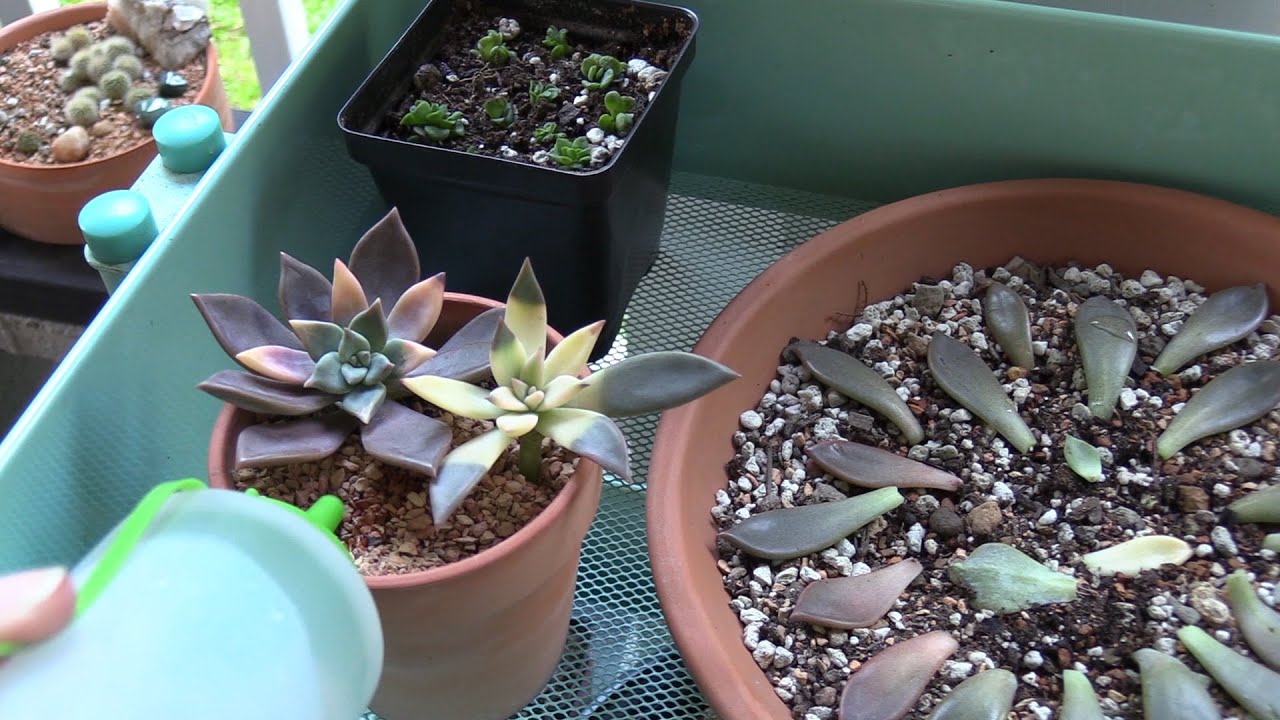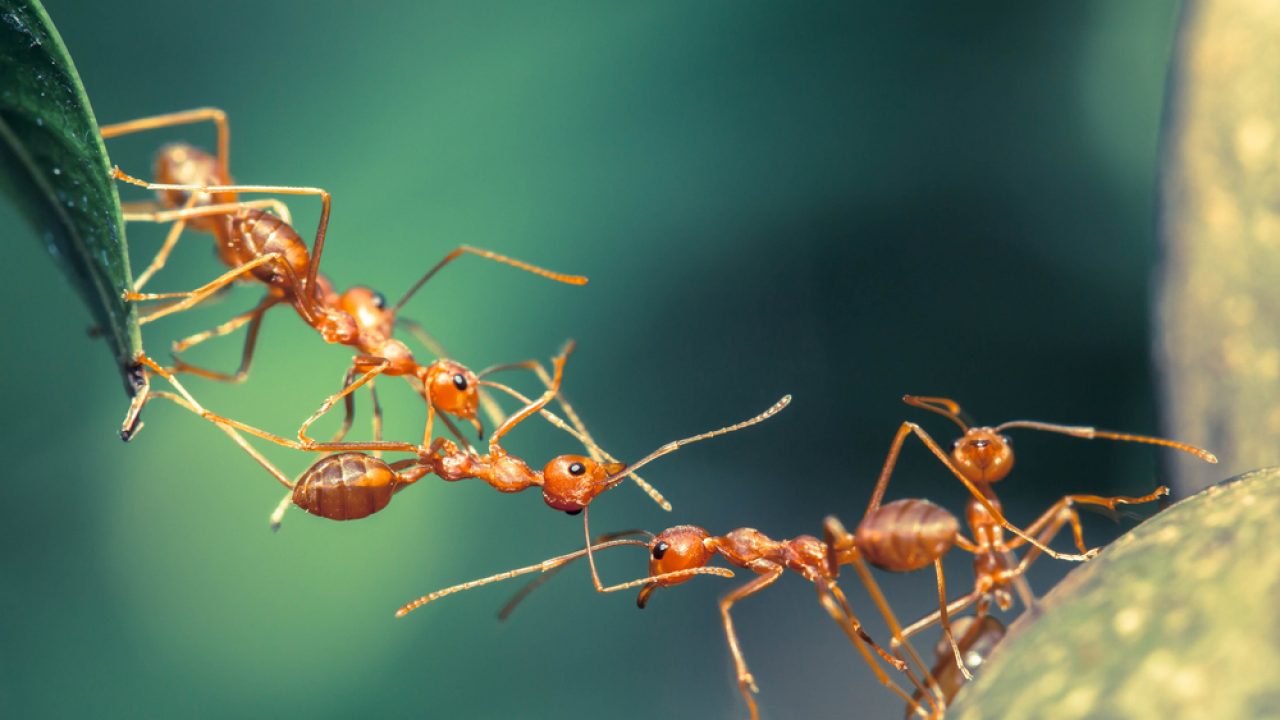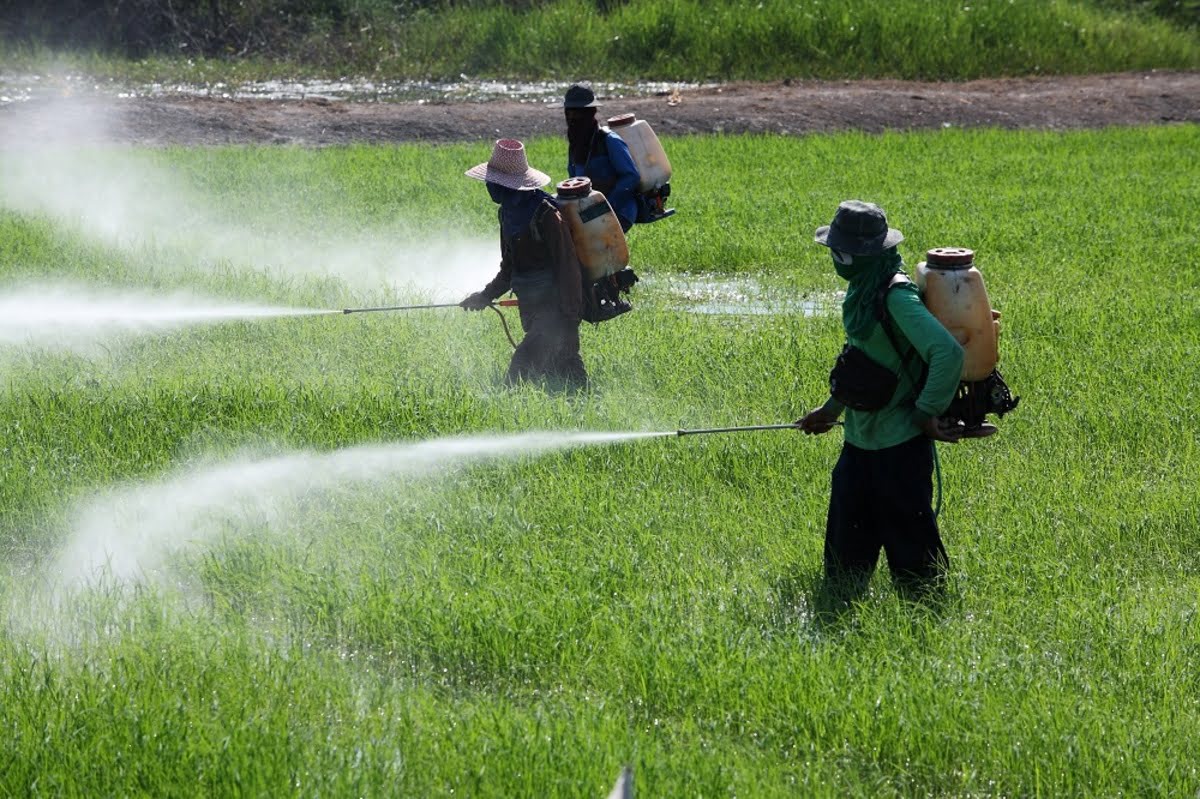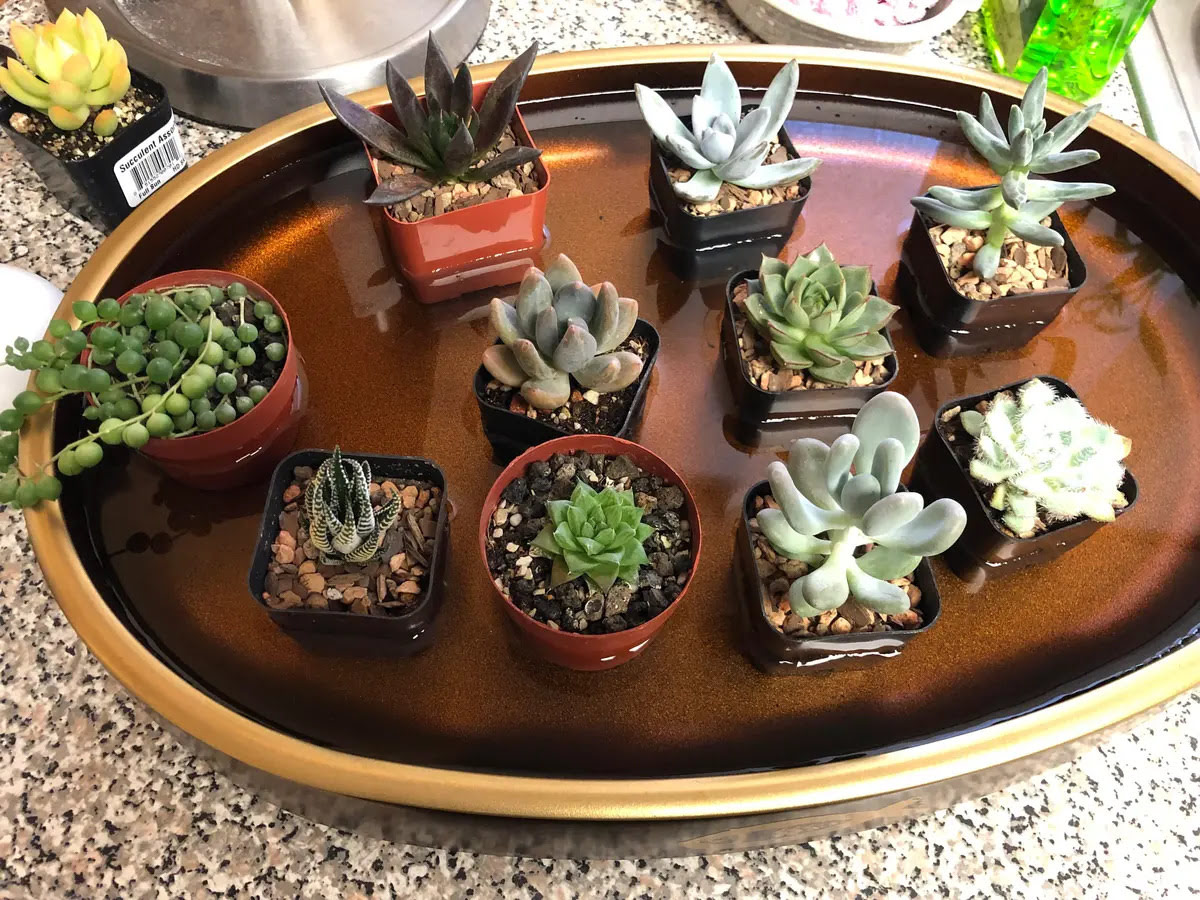Home>Gardening News and Trends>Latest News>How Do Insects Walk On The Water
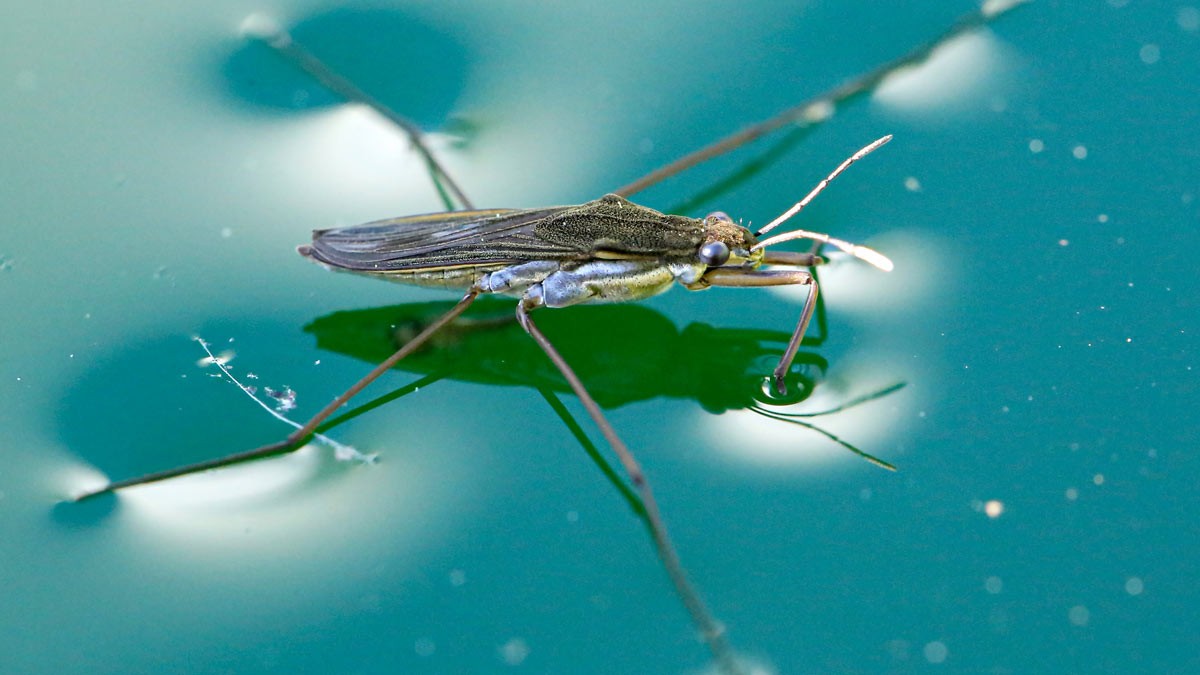

Latest News
How Do Insects Walk On The Water
Published: November 29, 2023
Discover the latest news on how insects defy gravity and walk on water. Explore their incredible abilities and adaptations in our featured article.
(Many of the links in this article redirect to a specific reviewed product. Your purchase of these products through affiliate links helps to generate commission for Chicagolandgardening.com, at no extra cost. Learn more)
Table of Contents
- How Do Insects Walk on the Water
- Introduction
- Surface Tension and Its Role in Water Walking
- Water Walking Adaptations
- Small Body Size and Lightweight
- Water Repellency and Hydrophobic Structures
- Leg Structures and Surface Area
- Extra Appendages and Spreading Techniques
- Interactions with Surface Waves
- Conclusion
How Do Insects Walk on the Water
Insects like water striders and pond skaters have the remarkable ability to walk on the surface of water with ease. This seemingly impossible feat is made possible by a combination of factors including surface tension, specialized adaptations, and careful movement techniques. Let’s take a closer look at how these insects accomplish this extraordinary feat.
Surface tension plays a crucial role in water walking. Surface tension is the force that causes the surface of a liquid to behave like a stretched elastic sheet. Insects take advantage of this property by distributing their weight over a large surface area, allowing them to minimize the impact on the water’s surface. This, in turn, helps them stay afloat and walk without sinking.
Water walking insects have evolved various adaptations to enhance their buoyancy and mobility on water. One notable adaptation is their small body size and lightweight. By being lightweight, insects can exert minimal pressure on the water’s surface, preventing them from breaking through the surface tension. Their small size also reduces the effect of gravity, making it easier for them to stay afloat.
Another crucial adaptation is their water-repellent or hydrophobic structures. The legs and body of water striders, for instance, are covered in specialized hairs that repel water. These microscopic structures trap air, creating a layer of air around the insect’s body, which further increases their buoyancy and prevents them from getting wet.
The shape and structure of their legs also play a vital role in water walking. Water striders have long, slender legs with specific modifications. These legs have a larger surface area, allowing them to distribute their weight and minimize pressure on the water. Additionally, the legs have tiny bristles that help create pockets of air and reduce contact with the water’s surface, further enhancing their ability to walk on water.
Introduction
Have you ever wondered how insects can effortlessly walk on the surface of the water? It seems like an impossible feat, defying the laws of physics. Yet, insects like water striders and pond skaters possess this incredible ability, known as water walking. By harnessing the power of surface tension and employing specialized adaptations, these tiny creatures can navigate across water with astonishing ease.
The concept of surface tension is at the heart of understanding how insects walk on water. Surface tension is the force that causes the surface of a liquid to behave like a stretched elastic sheet. It is a property that arises from the cohesive forces between the molecules of the liquid. This cohesive force creates a thin, invisible “skin” on the water’s surface, making it behave like a solid surface to small, lightweight objects like insects.
Water walking insects have evolved a range of fascinating adaptations that enable them to take advantage of surface tension. One key adaptation is their small body size and lightweight nature. By being small and light, insects can distribute their weight over a larger surface area, exerting minimal pressure on the water’s surface. This prevents them from sinking and allows them to stay afloat.
Furthermore, water-repellent or hydrophobic structures on their bodies play an essential role in their water walking abilities. These structures, such as specialized hairs or waxy coatings, repel water by reducing its contact with their bodies. This hydrophobicity creates a barrier between the insect and the water, effectively increasing their buoyancy and preventing them from getting wet.
Another crucial aspect of water walking is the shape and structure of the insect’s legs. Water striders, for instance, have long, slender legs that are adapted for walking on water. These legs have specific modifications, such as tiny hairs or bristles, that help reduce the contact area with the water’s surface. By creating tiny pockets of air, these leg structures increase buoyancy and allow the insects to glide across the water effortlessly.
In addition to these physical adaptations, insects also employ careful movement techniques to optimize their water walking abilities. By delicately skimming across the water’s surface, they distribute their weight evenly, avoiding breaking the delicate surface tension. The rapid leg movements of water striders create a pushing force that propels them forward without sinking.
Understanding how insects walk on water not only gives us insights into the marvels of nature but also has potential applications in engineering and nanotechnology. Researchers are studying these water-walking insects to develop innovative materials and surfaces that can mimic their hydrophobic properties and enhance the floating capabilities of small objects.
So, the next time you come across a water strider elegantly gliding across a pond or a pond skater defying the laws of physics, take a moment to appreciate the remarkable adaptations and physics at play that enable these insects to walk on water.
Surface Tension and Its Role in Water Walking
Surface tension is a fascinating phenomenon that plays a crucial role in the ability of insects to walk on water. It is the force that causes the surface of a liquid, like water, to behave like a stretched elastic sheet. This force is derived from the cohesive interactions among the water molecules on the surface, creating a kind of invisible skin that allows insects to stand and move without sinking.
When insects land on the water’s surface, the surface tension acts like a thin, flexible film that supports their weight. It resists any external force that tries to penetrate or break the water’s surface. In the case of water walking insects, their small body size and lightweight nature enable them to effectively distribute their weight over a larger surface area, minimizing the impact on the water and preventing them from breaking through the surface tension.
Surface tension can be visualized by observing the behavior of small objects placed on water. Drops of water form into spherical shapes due to the surface tension. You may have observed insects like water striders glide effortlessly across the water’s surface, leaving a trail of ripples behind them. This is a result of the surface’s response to the insect’s weight and movement. The surface tension allows the water to behave like a solid surface, supporting the insect’s weight and reducing the friction between the water molecules as the insect moves.
In addition to supporting the insect’s weight, surface tension also enables insects to propel themselves forward. Water striders, for example, utilize the concept of surface tension gradients to generate movement. By slightly tilting their body, they create an imbalance in surface tension in front of and behind their legs. This imbalance propels them forward, as the higher surface tension pushes them toward the lower surface tension region. They essentially “row” or “skip” on the water’s surface by repeating this action with their legs, using the surface tension as a force to move themselves across the water.
Surface tension is not only essential for water walking insects but also for other organisms and natural processes. For example, certain aquatic plants and spiders also utilize surface tension to move and survive in their environment. Surfactants and detergents disrupt surface tension, allowing liquids to spread more easily. This phenomenon can be observed when soap bubbles burst or when a drop of detergent is added to a water surface, causing it to flatten and spread. Understanding surface tension and its role in water walking not only enhances our appreciation for the wonders of nature but also opens doors to scientific advancements and applications in various fields.
Water Walking Adaptations
Walking on water requires specific adaptations that enable insects to defy gravity and navigate the watery surface. These adaptations, honed over millions of years of evolution, involve a combination of physical attributes and behavior patterns to ensure successful water walking.
One of the key adaptations seen in water walking insects is their small body size and lightweight nature. By having a compact body and minimizing their weight, these insects can distribute their load over a larger surface area, thereby reducing the pressure exerted on the water’s surface. This lightweight construction allows them to stay afloat without breaking the surface tension.
Water-repellent or hydrophobic structures are another crucial adaptation for water walking insects. These structures can be found on the legs and bodies of insects such as water striders and pond skaters. The hydrophobic surfaces repel water, preventing it from wetting the insect and reducing their contact with the water. This hydrophobicity is often achieved through the presence of specialized hairs or waxy coatings that create a barrier between the insect and the water, enhancing their buoyancy and preventing them from sinking.
The shape and structure of the legs are also important adaptations for water walking. Water striders, for example, have long and slender legs that are covered in tiny hairs or bristles. These leg structures serve multiple functions. Firstly, they increase the surface area, allowing the insect to distribute its weight over a larger area, minimizing the impact on the water’s surface. Secondly, they help create pockets of air, reducing the contact area between the legs and the water, which further enhances the insect’s buoyancy and prevents sinking.
Extra appendages or structures are often observed in water walking insects. These appendages act as additional support, helping the insect maintain balance and maneuverability on the water’s surface. For instance, water striders have middle and hind legs that are longer than their front legs, which helps them distribute their weight more evenly and maintain stability as they navigate on the water.
Water walking insects also possess specific behavioral adaptations to optimize their abilities on water. They employ delicate movements, rapidly skimming their legs on the water’s surface to distribute their weight evenly and maintain balance. Additionally, they utilize their long legs to take advantage of the surface tension gradients, generating forward propulsion by creating imbalances in the surface tension forces between their legs.
Overall, water walking insects have evolved an array of adaptations that allow them to traverse the water’s surface effortlessly. Their small size, lightweight nature, water-repellent structures, leg shape and structure, and specific behaviors all work together to enable them to defy gravity and roam on water. Studying these adaptations not only deepens our understanding of biological evolution but also has the potential to inspire innovative designs and materials for various applications, from water-walking robots to water-resistant surfaces.
Small Body Size and Lightweight
One of the key adaptations that enable insects to walk on water is their small body size and lightweight nature. These characteristics play a crucial role in reducing the pressure exerted on the water’s surface, allowing the insects to stay afloat and move with ease.
Being small and lightweight is advantageous for water walking insects because it allows them to distribute their weight over a larger surface area. Since the surface tension of water depends on the amount of contact between an object and the water, spreading the weight over a larger area minimizes the pressure on the surface. This prevents the insect from breaking through the water’s surface tension and sinking.
In addition to minimizing pressure, small body size also reduces the effect of gravity on the insect’s buoyancy. The smaller an object, the less it is affected by gravitational forces. This means that even if the insect slightly breaks the water’s surface tension, its lightweight nature helps it stay afloat. The reduced gravitational force allows the insect to balance the breaking of surface tension and maintain its position on the water.
Having a small body size and being lightweight also enhances the overall mobility and agility of water walking insects. They can move quickly and change directions easily, thanks to the reduced mass they need to maneuver. This enables them to navigate complex water surfaces, including areas with ripples or waves, without sinking or losing their balance.
Furthermore, being small and lightweight provides an advantage in terms of the energy required for locomotion. With lesser mass to move around, water walking insects save energy in comparison to larger organisms. This efficiency allows them to glide smoothly on the water’s surface without expending excessive energy.
This adaptation of small body size and lightweight nature is evident in water walking insects such as water striders, pond skaters, and water bugs. These insects have evolved to have streamlined bodies, minimizing their size while maximizing their efficiency in walking on water. Their ability to effortlessly navigate across water surfaces highlights the remarkable adaptability of nature to conquer various environments.
The understanding of the significance of small body size and lightweight adaptations observed in water walking insects not only provides insights into the principles of biomechanics but also has potential applications in fields such as robotics and engineering. Researchers and engineers can study these adaptations to develop lightweight and agile structures that can move efficiently on water surfaces, leading to advancements in fields such as drone technology, biomimetic materials, and aquatic exploration.
Water Repellency and Hydrophobic Structures
Water repellency and the presence of hydrophobic structures are key adaptations that allow water walking insects to move effortlessly on the water’s surface. These adaptations help them repel water and reduce the contact area between their bodies and the water, enhancing their buoyancy and preventing them from sinking.
Water-repellent or hydrophobic structures can be found on the legs, bodies, and wings of water walking insects. These structures are often made up of specialized hairs, bristles, or waxy coatings that have low surface energy. As a result, they create a barrier that repels water, preventing it from wetting the insect’s body and reducing the contact area with the water.
The hydrophobic nature of these structures is crucial for water walking insects, as it allows them to maintain their buoyancy. By repelling water, these insects effectively create a layer of air around their bodies, enabling them to float on the water’s surface. This air layer serves as a protective cushion, reducing the weight of the insect on the water and preventing it from breaking through the surface tension.
Water repellency and hydrophobic structures also play a role in keeping the insects dry. By preventing water from wetting their bodies, these structures help them avoid the negative effects of water, such as increased drag or reduced mobility. It allows the insects to move freely and efficiently, minimizing any resistance or interference from the surrounding water.
In addition to repelling water, these hydrophobic structures also prevent the accumulation of surface contaminants. Dust, dirt, and other particles are less likely to stick to a water-repellent surface, meaning that water walking insects can maintain their functionality without being hindered by debris that could affect their mobility or compromise their buoyancy.
Water-repellent structures are found in various groups of water walking insects, including water striders, pond skaters, and water bugs. Each species has its unique adaptations to repel water and remain buoyant. These adaptations have evolved over time to ensure successful locomotion on the water’s surface and enable these insects to thrive in their aquatic habitats.
Understanding the mechanisms and properties of water repellency and hydrophobic structures not only sheds light on the wonders of nature but also inspires scientific advancements and technological innovations. Researchers look to these natural adaptations to develop materials with improved water repellency, such as self-cleaning surfaces, anti-fouling coatings, and water-resistant textiles. By harnessing the principles of water repellency, researchers can create innovative solutions for a wide range of applications, including aerospace, marine engineering, and biomedical development.
Leg Structures and Surface Area
The shape and structure of the legs in water walking insects play a vital role in their ability to traverse the water’s surface. These adaptations allow the insects to distribute their weight effectively and maximize their surface area, enabling them to walk on water without sinking.
Water walking insects, such as water striders and pond skaters, have long and slender legs that are specialized for their unique locomotion on water. These legs are adapted to distribute the insect’s weight over a larger surface area, reducing the pressure exerted on the water’s surface and minimizing the risk of breaking through the surface tension.
The larger surface area of the legs helps to distribute the weight of the insect more evenly. Instead of concentrating the pressure on a single point, the weight is spread out over a larger area, allowing the insect to walk on water without breaking through the surface tension. This adaptation is particularly valuable as it allows the insects to move freely across the water’s surface without sinking or disrupting their equilibrium.
In addition to the overall structure of the legs, water walking insects have specific adaptations on their legs that contribute to their ability to walk on water. These adaptations include tiny hairs, bristles, or hydrophobic structures. These structures help to create air pockets or reduce the contact area between the leg and the water, further enhancing the insect’s buoyancy and reducing the chances of breaking through the water’s surface tension.
The leg structures also aid in the insect’s ability to generate forward propulsion. Rapid leg movements create a series of downward forces that push against the water, propelling the insect forward. The larger surface area of the legs allows for greater contact with the water, resulting in more effective propulsion and increased speed.
Water striders, in particular, have evolved a unique leg structure known as the dimpled or water-repellent leg surface. The legs of water striders have numerous tiny dimples, or microstructures, which increase the surface area and create space for air to be trapped, further improving buoyancy. These air pockets reduce the contact surface between the leg and the water, allowing the insects to walk on water with even greater ease.
The leg structures of water walking insects showcase the remarkable adaptations that have evolved to conquer the challenges of walking on water. These adaptations maximize the surface area, distribute weight effectively, and enhance buoyancy and propulsion. By studying these leg structures, researchers can gain insights into bio-inspired engineering and the development of innovative materials that mimic the efficient water-walking capabilities of these fascinating insects.
Extra Appendages and Spreading Techniques
In addition to their leg structures, water walking insects utilize extra appendages and spreading techniques to enhance their ability to walk on water. These adaptations provide them with additional support, stability, and maneuverability as they navigate across the water’s surface.
Water striders, for instance, have evolved extra appendages that contribute to their water-walking abilities. These extra appendages, known as middle and hind legs, are longer than their front legs. The elongated middle and hind legs help distribute the weight of the insect more evenly, improving stability and balance on the water’s surface. By having this additional support, water striders can maintain their upright posture and walk more confidently on the water.
In addition to their extra appendages, water walking insects employ spreading techniques to maximize their weight distribution and enhance their buoyancy. When water striders or pond skaters land on the water surface, they quickly and skillfully spread their legs apart to take advantage of surface tension. This spreading increases the surface area in contact with the water, distributing their weight more effectively and minimizing the pressure exerted on the surface.
The spreading technique allows water walking insects to disperse their weight over a larger area, reducing the chance of breaking through the water’s surface tension. By carefully controlling the spreading of their legs, these insects can evenly distribute their weight and optimize their buoyancy, providing them with a stable platform for walking on water.
Moreover, water walking insects employ advanced spreading techniques during higher-speed movements. They activate a rowing-like motion with their middle and hind legs, almost like paddling. This technique allows them to swiftly propel themselves across the water’s surface, maintaining their balance and staying above the surface tension.
The ability to spread their legs and engage in spreading techniques is critical for water walking insects to effectively distribute their weight and maintain their buoyancy. These techniques also enhance their maneuverability on the water, enabling them to navigate around obstacles and adapt to changing environmental conditions.
Water walking insects have finely honed extra appendages and spreading techniques that contribute to their remarkable ability to walk on water. These adaptations provide them with increased stability, weight distribution, and control. By studying and understanding these techniques, scientists and engineers can draw inspiration for the development of bio-inspired technologies, such as miniature robots capable of walking on water or designing floating devices that can distribute weight efficiently.
Interactions with Surface Waves
Water walking insects, adept at navigating the water’s surface, encounter another dynamic challenge: surface waves. These waves can disrupt the delicate balance required for walking on water. However, water walking insects have evolved adaptations that allow them to interact and maneuver through surface waves with remarkable agility.
When surface waves are present, water walking insects adjust their leg movements and body position to maintain their stability. As the waves ripple across the water’s surface, these insects dynamically respond to the changing conditions to prevent instability or sinking. They go with the flow, adapting their movements to the oscillatory motion of the waves.
One strategy that water walking insects use is synchronizing their leg movements with the rhythm of the waves. By adapting their leg strokes to coincide with the peaks and troughs of the waves, they effectively counteract the forces imparted by the wave motion. This synchronization allows them to maintain their position on the water’s surface and minimize any disruptive effects caused by the waves.
Water walking insects also adjust the angle and position of their bodies in response to surface waves. By aligning their bodies with the wave direction, they can decrease the impact of the waves and reduce the likelihood of being knocked off balance. This dynamic response helps them absorb the energy from the waves without losing their stability.
Instead of fighting against the waves, water walking insects take advantage of their ripple-like movements. They navigate through the peaks and troughs, effectively “surfing” the surface waves. Their rapid leg movements and delicate weight distribution allow them to ride the waves while maintaining their buoyancy and avoiding any disruptive forces.
Additionally, the surface tension of the water plays a significant role in the interactions between water walking insects and surface waves. The cohesive forces that create surface tension also help stabilize the insect’s movements. The water’s surface tension acts as a “safety net,” allowing the insects to recover their position and balance after encountering disturbances caused by surface waves.
The ability of water walking insects to navigate through surface waves highlights their remarkable adaptability and agility. By integrating their movements with the wave dynamics and harnessing the properties of surface tension, these insects can effectively overcome the challenges posed by fluctuating water surfaces. Their interactions with surface waves provide valuable insights into fluid dynamics and inspire advancements in the development of water-walking technologies.
Understanding the interactions between water walking insects and surface waves not only deepens our appreciation for the intricacies of nature but also has implications for biomimetic engineering and the design of watercraft and autonomous vehicles. By studying and replicating the strategies employed by these insects, scientists and engineers can develop innovative solutions for traversing and navigating complex water environments.
Conclusion
The ability of insects to walk on water is a testament to the remarkable adaptations and physics at play in the natural world. With a combination of surface tension, specialized adaptations, and intricate movement techniques, water walking insects, such as water striders and pond skaters, can effortlessly glide across the water’s surface.
Surface tension plays a fundamental role in water walking, creating a delicate balance between buoyancy and pressure. The insects’ small body size and lightweight nature allow them to distribute their weight over a larger surface area, minimizing pressure on the water’s surface and preventing sinking.
Water-repellent or hydrophobic structures on their bodies enhance their buoyancy, creating a barrier between the insect and the water. These structures repel water, reduce surface contact, and increase their ability to stay afloat and move with ease.
The shape and structure of their legs, along with spreading techniques, help to distribute weight, maximize surface area, and maintain stability. The dynamic interactions with surface waves showcase their adaptability and ability to navigate through fluctuating water conditions.
Studying water walking insects not only deepens our understanding of biological adaptations but also has the potential to inspire technological advancements. Researchers can draw inspiration from these natural adaptations to develop innovative solutions in fields such as robotics, engineering, and biomimetic materials.
The marvels of water walking insects remind us of the extraordinary abilities found in the natural world. By observing and appreciating their unique adaptations, we gain insights into the forces that shape life and the potential applications of nature-inspired designs.
So, the next time you see a water strider gracefully skating on a pond or a pond skater zigzagging effortlessly across the water’s surface, take a moment to marvel at the incredible adaptability and ingenuity of these remarkable insects.
